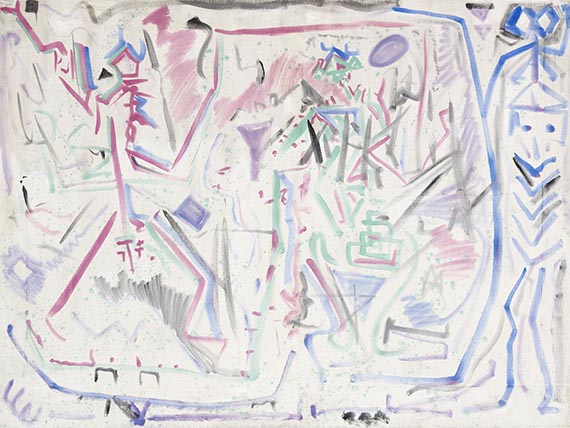Dispersion on canvas. Lower right signed and inscribed. 132 x 178.5 cm.
- “Ende im Osten” was created one year before A. R. Penck was expatriated and forced to move to the West - The symbolic signs spread across the painting's surface with extraordinary delicacy. - The pictorial system that A. R. Penck devised is based on his extensive preoccupation with scientific themes. - Penck exhibited at the documenta in Kassel in 1972, 1982 and 1992, and at the Venice Biennale in 1984.
The work is registered in the archive of Galerie Werner, Berlin.




